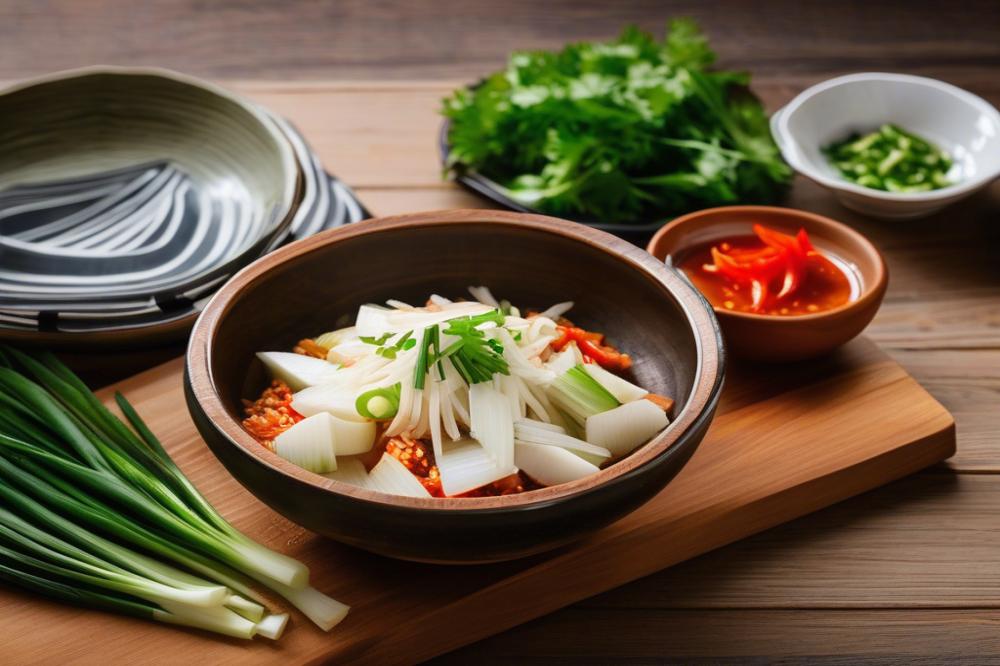Introduction
Baek Kimchi holds a special place in Korean cuisine and culture. This traditional recipe is a type of White Kimchi that does not rely on chili flakes for its flavor. Instead, it highlights the natural taste of fresh, fermented vegetables, particularly napa cabbage. Many Korean families prepare this dish to accompany meals or to serve as a refreshing side. Its significance goes beyond just being a tasty addition; it’s a reflection of a rich culinary heritage.
Fermented foods, like Baek Kimchi, are staples in Korean diets. They not only enhance meals but also provide numerous health benefits. This dish is packed with probiotics, which boost gut health and improve digestion. Garlic and ginger are often used in its preparation, contributing to its unique flavor profile and health benefits. Eating pickled vegetables like Baek Kimchi can be a great way to support overall wellness and integrate more healthy food into daily life.
The process of making this traditional dish involves carefully balancing ingredients. Napa cabbage sits at the forefront, absorbing flavors and becoming tender during fermentation. Many recipes also include various spices, each adding a distinct character. The absence of chili allows the other ingredients to shine through, providing a different experience for the palate. This approach makes Baek Kimchi a versatile choice for many meals while standing out in the realm of fermented delights.
What is Baek Kimchi
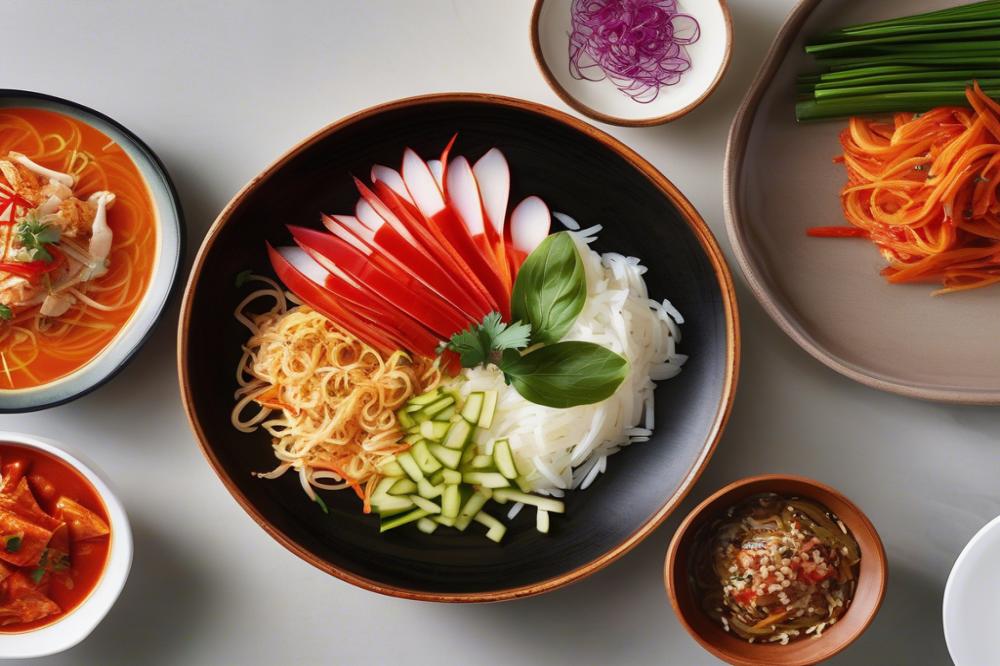

Baek kimchi is a type of White Kimchi that plays an important role in Korean cuisine. Unlike its red counterpart, this version does not use chili flakes. Instead, it focuses on the natural flavors of the main ingredients.
This traditional recipe features napa cabbage as the star vegetable. Other key ingredients include garlic, ginger, and often a variety of vegetables like radishes and green onions. These components come together to create a refreshing, vibrant dish that stands out among fermented vegetables.
The flavor profile of baek kimchi is crisp and subtly tangy. Garlic and ginger add warmth, while the absence of chili balances the dish. This makes it a delightful option for those who prefer milder tastes. Many appreciate it for its probiotic qualities, which are common in healthy food choices.
This kimchi can be enjoyed in various ways within meals. It often serves as a side dish that complements rice or meat. People also use it as an ingredient in other dishes, like soups or stir-fries, to bring a fresh twist. Pickled vegetables like this provide not just flavor but also nutrition.
Ingredients List and Quantities
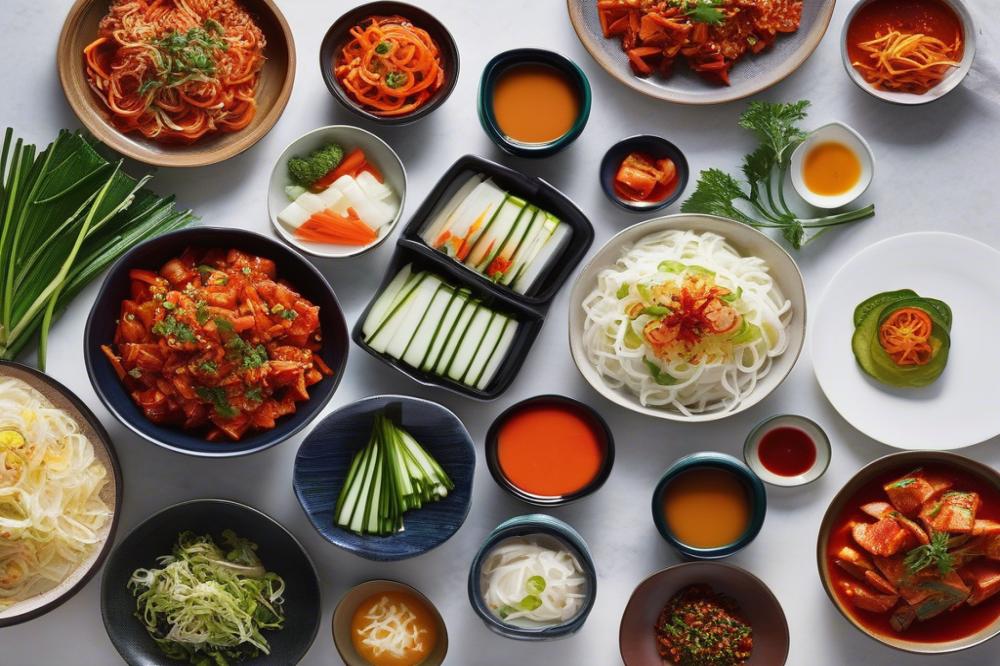

To create Traditional Baek Kimchi, gather the following ingredients. You will need 2 medium heads of napa cabbage, a key element in this Korean dish. Coarse sea salt will play a crucial role in the fermentation process. For this recipe, measure out 1 cup of salt. Water is also essential; use 8 cups to combine with the salt for soaking.
Next, prepare the flavor base. One whole bulb of garlic provides depth. You will also need a piece of ginger, roughly 2 inches long, which adds warmth. For sweetness, 2 tablespoons of sugar are necessary to balance the saltiness.
To add some crunch, julienne 2 medium carrots and 1 small daikon radish. The daikon gives a unique flavor and texture. Chopped green onions, about 5 stalks, add freshness and color. Finally, for those who enjoy a bit of heat, chili flakes can be added to taste.
Each ingredient boasts health benefits. Napa cabbage is rich in vitamins A, C, and K, making it a healthy food choice. Garlic and ginger are packed with antioxidants and anti-inflammatory properties. These ingredients work together to create probiotic-rich, fermented vegetables. Such foods support gut health and overall well-being.
The combination of these ingredients creates a delicious balance of flavors. This traditional recipe is not just about taste but also health benefits. Pickled vegetables can enhance your meals while being easy to prepare. Enjoy making this Korean cuisine staple.
Method
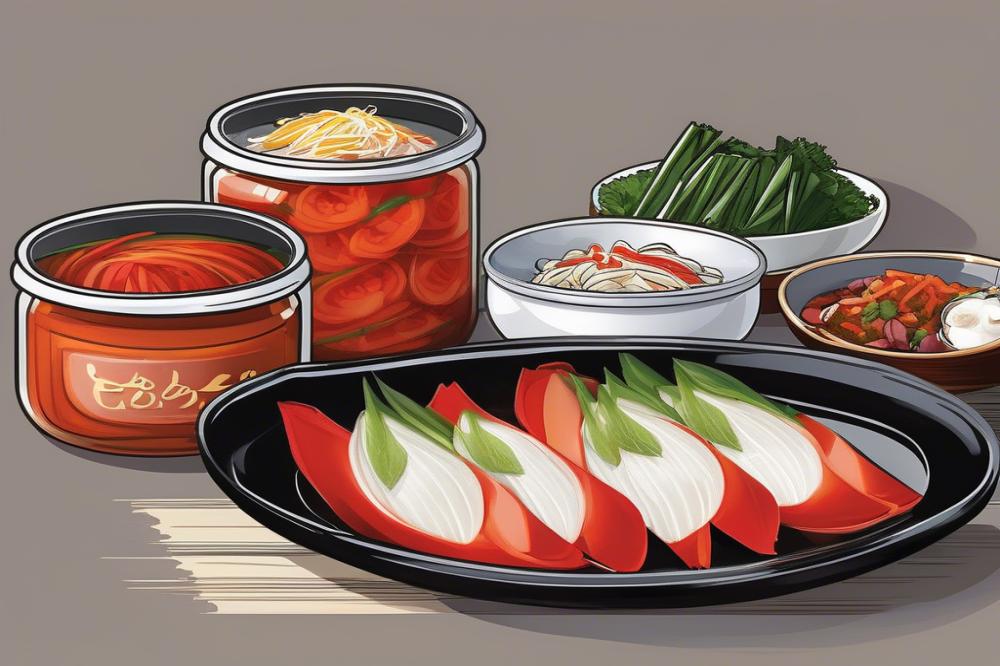

Prepare the Napa Cabbage by Salting and Soaking
Start with a fresh head of napa cabbage. Cut it lengthwise into quarters. Next, sprinkle coarse sea salt between the leaves. This step is important as the salt will draw out moisture. After salting, place the cabbage in a large bowl and submerge it in water. Let it soak for about two hours. Flip the cabbage halfway through. The leaves should become pliable and softened by the time you’re finished.
Make the Garlic and Ginger Paste
Grab a few cloves of garlic and a small piece of ginger. Peel them before chopping them finely. Use a food processor if you have one for a smoother result. Blend the garlic and ginger together until it becomes a paste. This mixture will add a flavorful punch to the baek kimchi. Don’t forget to scrape the sides of the bowl to incorporate everything well.
Mix in the Vegetables and Seasonings
Prepare other vegetables like carrots and radishes. Shred them into thin strips. In a sizable mixing bowl, combine the garlic-ginger paste with these vegetables. Add Korean chili flakes based on your heat preference. This spice gives the kimchi its characteristic kick without overpowering the other flavors. Finally, you can also add a little sugar to balance the taste.
Pack the Mixture in Jars for Fermentation
Choose clean glass jars for storing your mixture. Pack the vegetable blend tightly into each jar. Leave some space at the top to allow for expansion. It is vital to eliminate air pockets as they can cause spoilage. Once filled, press the mixture down firmly. This ensures that the vegetables are submerged in their juices.
Discuss Storage and Fermentation Duration
Find a cool, dark place to store your jars. A basement or cupboard works well. Let the kimchi ferment for about three to five days. Check daily and taste to see if it has reached your desired flavor. The longer it sits, the more tangy it will become. Once fermented, store the jars in the refrigerator. This will slow down the fermentation process and maintain its healthy probiotic benefits. Enjoy your homemade pickled vegetables as a staple in Korean cuisine.
Health Benefits of Baek Kimchi
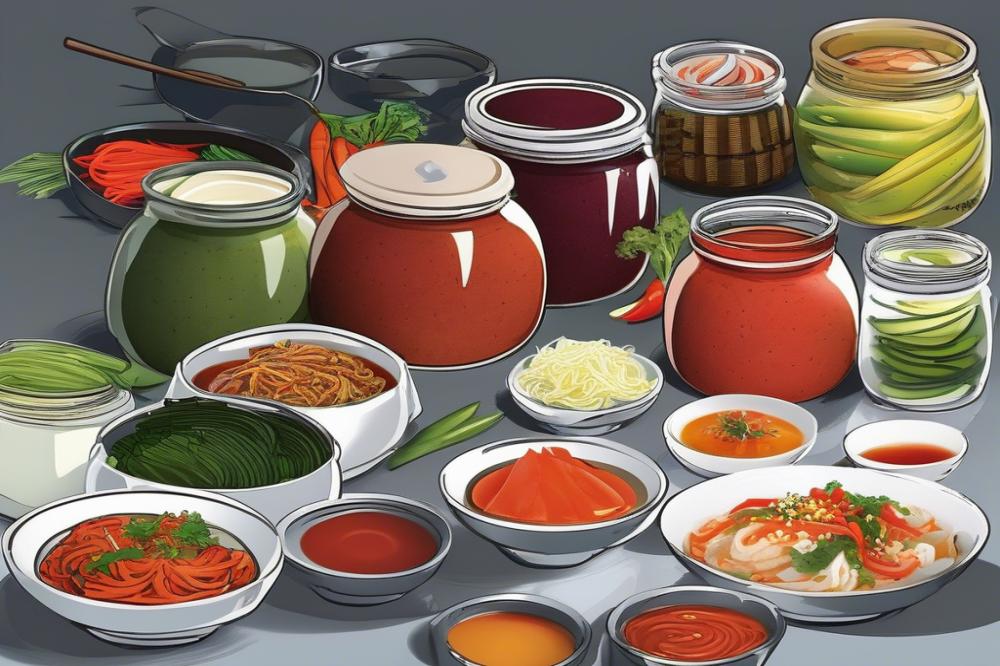

Baek Kimchi offers numerous health benefits that make it a worthwhile addition to any diet. One of the standout features of this dish is its probiotic qualities. Probiotics are microorganisms that promote gut health. They help maintain a balanced digestive system, which can lead to better overall well-being.
Fermented vegetables, such as those found in this traditional recipe, provide essential nutrients. Nutritional advantages include a wealth of vitamins, particularly vitamin C from napa cabbage. This vitamin is vital for the immune system, helping the body fend off illnesses more effectively. Furthermore, garlic and ginger enhance the dish’s flavor and boost its health profile. Both ingredients have anti-inflammatory properties and contribute to improved digestion.
Low in calories, Baek Kimchi allows for indulgence without guilt. This makes it an excellent companion to any meal. With a high fiber content, it supports healthy digestion and promotes a feeling of fullness. Including more fiber in the diet can lead to better weight management, making it a great component of a healthy food regimen.
The combination of fresh ingredients and fermentation creates a unique taste experience while delivering critical health benefits. With the tangy flavors and crunchy texture, this dish captivates the palate. It demonstrates just how delicious pickled vegetables can be while substantially contributing to a healthy lifestyle. Incorporating Baek Kimchi into meals can enhance both enjoyment and health, making it a true gem of Korean cuisine.
Cultural Significance
Baek Kimchi holds a special place in Korean culture and cuisine. Traditionally, it is made with napa cabbage, garlic, and ginger. Unlike its spicier relatives, this version does not rely on chili flakes. As a result, it has a milder, refreshing taste. This characteristic makes it a favorite accompaniment to various dishes.
During traditional meals, households often serve it alongside rice and stews. The balanced flavors enhance the overall dining experience. Celebrations and gatherings often include this dish. It symbolizes warmth and hospitality in Korean culture. People appreciate it not just for its taste, but for the care involved in its preparation.
Fermented vegetables are a staple in Korean diets. Various kinds of kimchi exist, each with unique attributes. Baek Kimchi is distinct because it focuses on freshness without the heat. While spicier kimchis can dominate the palate, this one complements other flavors. It often acts as a palate cleanser. Diners enjoy its crunchiness and subtle tang.
This traditional recipe is not only delicious but also healthy food. Rich in probiotics, it aids digestion and nutrition. Families often prepare it during cold months for its health benefits. Making this kimchi can be a community event, bringing families together. Sharing culinary creativity strengthens bonds and creates lasting memories.
The position of this dish within Korean culinary practices is noteworthy. It emphasizes the importance of balance in meals, offering contrast to richer dishes. Pickled vegetables, like Baek Kimchi, are vital for achieving that balance. They represent the diversity of flavors in Korean cuisine. People understand the significance of incorporating such dishes into daily life.
Final Thoughts on Baek Kimchi
The traditional recipe for Baek Kimchi offers a delightful window into the heart of Korean cuisine. This dish stands out for its refreshing taste and crisp texture. By using simple, natural ingredients like napa cabbage, radishes, and a few spices, it showcases the beauty of fermented vegetables. Such recipes are rooted in centuries of culinary tradition and continue to be cherished by families today.
Making this dish at home can be a rewarding experience. It is not only about following steps; it’s also about connecting with the culture. Besides, creating your own Baek Kimchi allows you to control the flavors and ingredients. You can adjust the spice levels to suit your preference, making it a versatile addition to any meal.
This type of kimchi is rich in probiotics, essential for a healthy gut. Including fermented foods like this can help support digestion and overall wellbeing. Adding it to your meals provides a punch of flavor alongside numerous health benefits. Enjoying such dishes contributes to a balanced diet, offering both nutrition and satisfaction.
In conclusion, taking the time to prepare Baek Kimchi at home can enhance your cooking skills. It also introduces you to the joys of fermented foods. These dishes sure play an important role in promoting a nutritious lifestyle. So, don’t hesitate to try this healthy and vibrant dish. You may just discover a new favorite in your culinary repertoire!

